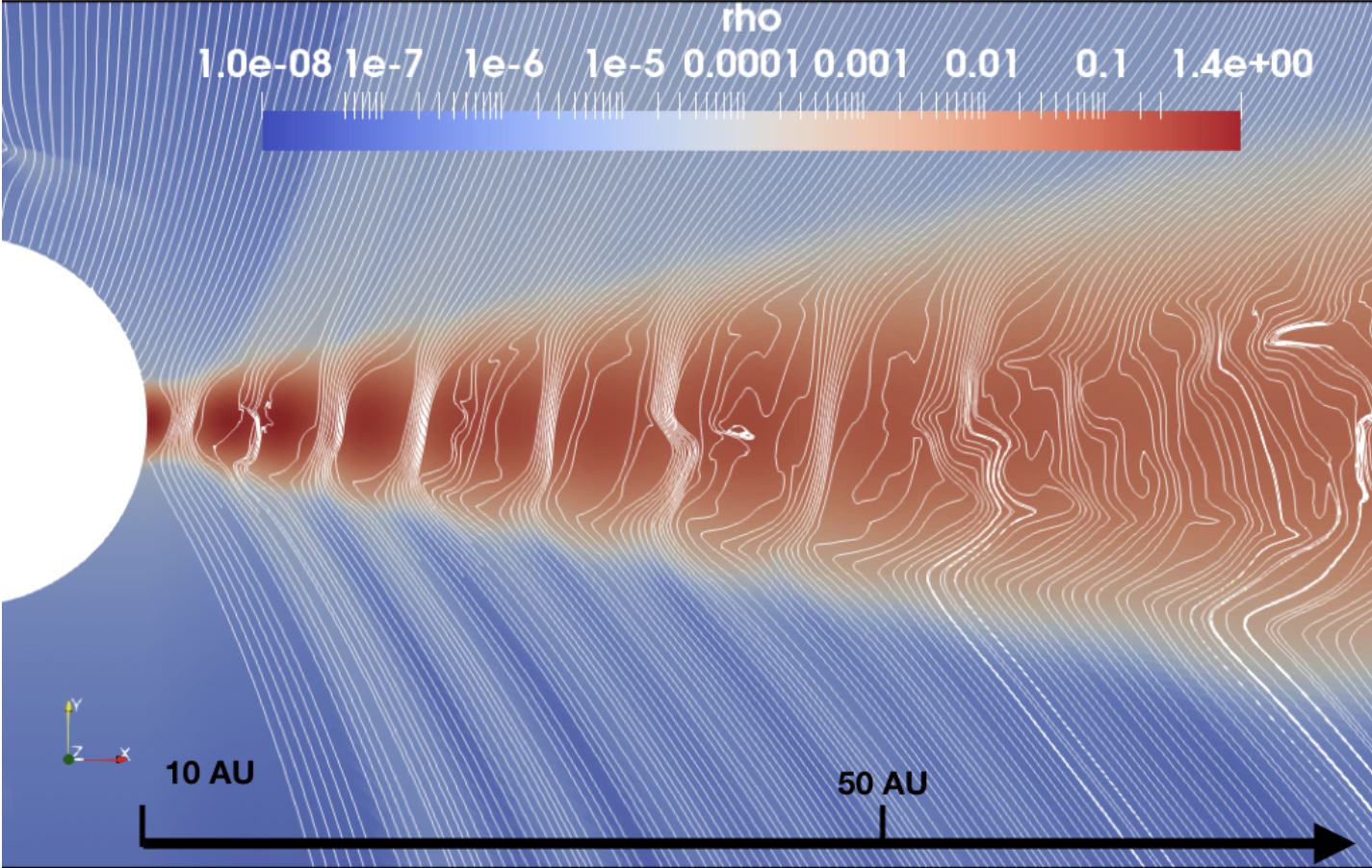
MHD@Exascale
MHD@Exascale
Overview
Develop a new generation of massively parallel magnetohydrodynamic codes portable to Exascale machines
Geoffroy LESUR, DR CNRS, IPAG, Université Grenoble Alpes
Damien CHAPON, Ingénieur-Chercheur, IRFU, CEA Saclay
Benoit COMMERÇON, CR CNRS, CRAL, ENS Lyon
Yohan DUBOIS, CR CNRS, IAP, Sorbonne Université
Patrick HENNEBELLE, Ingénieur-Chercheur, IRFU, CEA Saclay
The MHD@Exascale project aims to develop a new generation of magnetohydrodynamic simulation codes capable of efficiently exploiting new accelerated supercomputers such as the future Exascale machine to be installed at the CEA’s Très Grand Centre de Calcul (TGCC) in 2025-2026.
The project aims to develop two complementary simulation codes and a platform for disseminating simulation data that is open to the community. These tools will enable ab-initio simulation of the collapse of interstellar clouds right through to the formation of primordial planetesimals, while capturing the coupling to magnetic fields, dust and radiation in real time at temporal and spatial scales unexplored to date. In addition, the project aims to reduce the environmental impact of simulations by minimizing their energy footprint and maximizing the sharing of primary data for reuse in other projects.
To develop
Our researchs
Modeling the interaction between the magnetic field and ionized gas during protostellar collapse
Develop and integrate new magnetohydrodynamic and anisotropic conductivity modules into the AMR Dyablo prototype
Modeling matter-radiation interaction
Develop and integrate a radiative transfer module into the Idefix accelerated multiphysics code using different enclosure models
Modeling gas-dust interaction
Develop and test different gas-dust coupling strategies in the AMR Dyablo prototype and Idefix code.
Promoting the dissemination and reuse of simulation data
Deployment of remote data processing servers connected to the Galactica database at all the consortium’s computing centers. Implementation of on-the-fly data processing routines for the Dyablo and Idefix codes.
The Consortium
Université Grenoble Alpes, CNRS, CEA Saclay
Scientific expectations
The new supercomputers that are and will be deployed in the coming years at national and European level will systematically be accelerated machines based on GPUs (Graphics Processing Units) or equivalent, in order to contain the environmental and energy impact of digital computing. It is therefore essential for the community to prepare and develop simulation tools adapted to these new architectures. This is the aim of MHD@Exascale.
MHD@Exascale will enable the emergence of two open source codes, Dyablo and Idefix, which will make it possible to operate Europe’s largest computers, while being capable of handling the full range of processes involved in star and planetary formation, from the collapse of protostellar gas to the formation of planetary systems such as our own.
The codes and modules developed as part of MHD@Exascale will eventually be opened up to the Universe sciences community, with the aim of obtaining INSU “community code” accreditation.
The simulation data produced will be made available on the Galactica database via remote data processing servers to be deployed in the MHD@Exascale consortium’s local computing centers, enabling massive simulations to be processed on the fly and reused in new scientific projects.
Societal impacts
The codes developed focus on performance portability and energy efficiency. Tests carried out on the Idefix code, for example, show an energy impact reduced by a factor of 6 compared with previous architectures and codes (Lesur et al. 2023). The aim of the project is to perpetuate these tools and train new generations of researchers, engineers and numerical engineers in accelerated HPC computing, which concerns the entire computing community in France, both in academia and in private research.
Skills development
A community of 4 researchers and research engineers mobilizing :
4 post-docs, 1 research engineer
More projects


